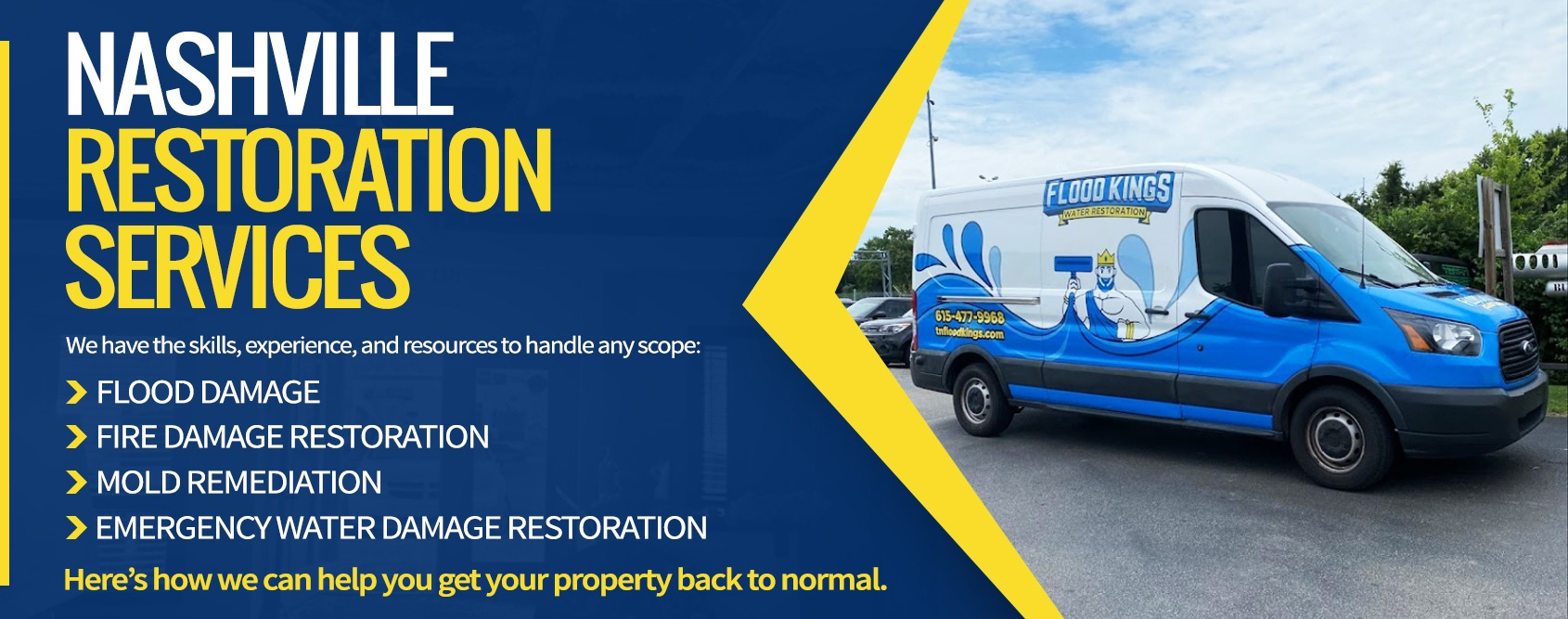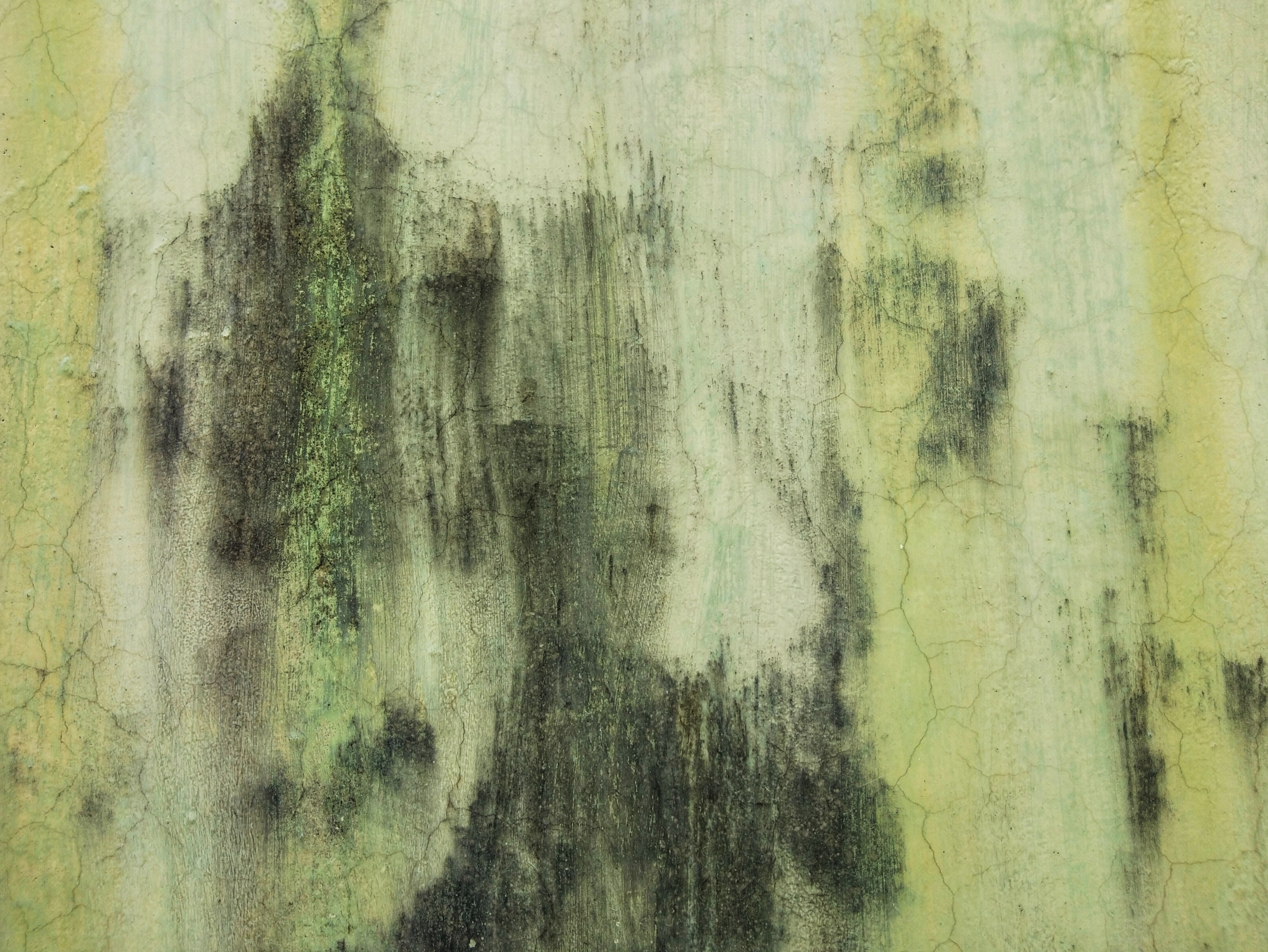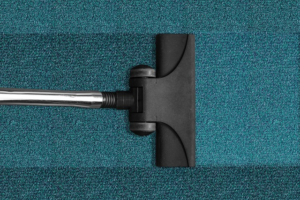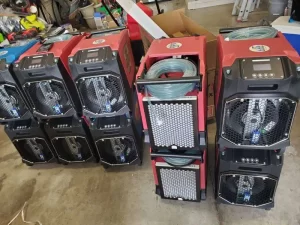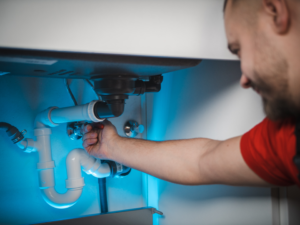Mold is a fast-growing and invasive pest that quickly colonizes any wet spot, necessitating careful eradication and prevention. How can you make the black mold vs. water damage distinction, and what should you do when you suspect you’ve got something awful growing in your home?
We’ll explore the differences between mold and water damage and discuss the steps that TN Flood Kings will take to remove and prevent these twin terrors.
What Is Black Mold?
Mold is a highly diverse group of fungi that decomposes, consumes, and breaks down organic materials. We’re surrounded by mold all the time: it floats through the air, lives in our food, and inhabits the soil. Most of the time, these microorganisms cause few problems.
There are over 100,000 mold species that thrive in different habitats, but they all share something in common: they need moisture to grow. While some species are quite helpful, such as those that help to make cheese, others spell trouble when they arrive at your doorstep.
What we call “black mold” can be several different species of blackish-green mold, but the most common one is Stachybotrys chartarum, which prefers materials like drywall and gypsum board.
This mold species ranges from olive green to deep black and tends to flourish in dark, hard-to-reach places, like crawl spaces, basements, bathroom tiles behind the toilet, or even in your HVAC system.
Dangers of Mold Infestation
Part of the reason that S. chartatum is so dangerous is that it can produce mycotoxins, otherwise known as mold poisoning. This can lead to headaches, mood swings, nosebleeds, memory loss, and bodily aches, even in those without an allergy.
No matter the color, every mold infestation should be taken seriously because it can release spores that pose health risks to vulnerable people, especially children.
Some of the health problems that can be caused by mold include sneezing, coughing, runny noses, dizziness, rashes, headaches, and asthma attacks.
What Is Water Damage?
Water damage is when any material, particularly porous materials, gets wet and isn’t immediately dried out. If you catch the issue immediately and treat the affected area, you might have only an ugly water stain.
However, it’s not uncommon for leaks to go undetected for days, weeks, or even months, by which time there has been serious damage done.
Water Damage and Mold Are Connected — But Not the Same!
Mold growth occurs in the presence of moisture, and water leaks are the perfect source for their nutrition. As such, if you have a water damage problem, you likely have a mold problem, too, especially if the situation has gone on for a long time.
It takes only one to two days for mold to grow, three to 12 days for colonies to develop, and three weeks to see visible mold growth on the walls, floors, or ceilings.
This means that if the leaks aren’t addressed in less than a day, it’s entirely likely that you don’t just have water damage but also an indoor mold problem.
Is It Mold or Water Damage?
You may assume that a black spot is mold and anything else is water damage, but this may not necessarily be true. There are many different types of mold, and some are light yellow, red, or even white; this means that you can’t rely on sight alone to identify signs of mold.
Here are some of the ways that you can differentiate between mold growth or water damage using sight, touch, smell, and feel.
Sight: Look at the way that the material has been affected. Water damage will cause bubbled or peeling paint and cracked or warped wood, while mold will eat away at its structural integrity over time.
Dirty smears, dark splotches, and gunk in your grout may suggest you need mold remediation.
Touch: Wearing protective gear like gloves and a mask, press your hand against the spot. If it’s wet, bumpy, and crumbling but doesn’t feel slimy, then it’s likely water damage.
Dark spots that smear are probably mold, even if they don’t necessarily feel wet. As touching mold can release mold spores, be sure to wash your hands and throw away the mask you were wearing.
Smell: Water stains from a clean water source don’t generally smell like anything, especially if they are now dry. However, mold will exude that familiar musty smell you associate with dank basements.
Feel: Water damage that isn’t infested with mold won’t cause any physical symptoms for you, but even small amounts of this dangerous substance can start impacting your health.
Think back to how you’ve been feeling recently. Have you felt achy, tired, and run down for no reason? Have your allergies been acting up? Do you have a headache most of the day? Are you dizzy?
You should be especially concerned if your symptoms get worse after running air conditioning, as this may mean that there’s mold in your ductwork, and you should call a pro like TN Flood Kings for help.
How to Know When You Need to Call a Professional Mold Remediation Company
It’s very tempting to try to remove mold yourself, but unless you know how to identify mold, remove damaged materials, and use the specialized cleaners recommended by the Institute of Inspection Cleaning and Restoration Certification for destroying colonies, it’s best to get professional help.
This is especially true if you have vulnerable people in your home, such as children, pregnant women, senior citizens, or immunocompromised individuals, as their health could be seriously affected by breathing in or touching mold.
Here’s a quick list of when you should absolutely call a professional like the Flood Kings to assist you.
Age: The water damage is older than a day or two.
Identifying: You have not been able to identify and stop the cause of the moisture within a few hours.
Materials: Porous materials like drywall, insulation, or carpeting have been completely saturated.
Damage: There are signs of warping and buckling in harder materials like wood or laminate.
Symptoms: You or a family member have developed symptoms like rashes, sneezing, headaches, and dizziness, particularly if it happens more when running air conditioners.
Visual infestation: You can actually see fungal colonies, which means they are well-established.
Why Call TN Flood Kings For a Free Consultation?
With over 15 years of experience, the TN Flood Kings work tirelessly to extract water, remove mold, and restore homes all across the greater Nashville region. Our IICRC-certified technicians use the latest equipment and methodology to destroy all mold species lurking in your home so that your family is safe and healthy.
We offer free consultations and are available 24/7 throughout the year. We know emergencies can strike at any time, so we’re always available to assist our neighbors with any type of water damage, large or small. Licensed and insured for your total peace of mind, we’ll provide excellent communication throughout the process so that you understand completely what’s happening and how we can help.
When you notice a funky odor or a suspicious spot, it’s time to call in professional help. TN Flood Kings is ready and willing to tackle a mold problem — and help you prevent it so that you never have to worry about it again.
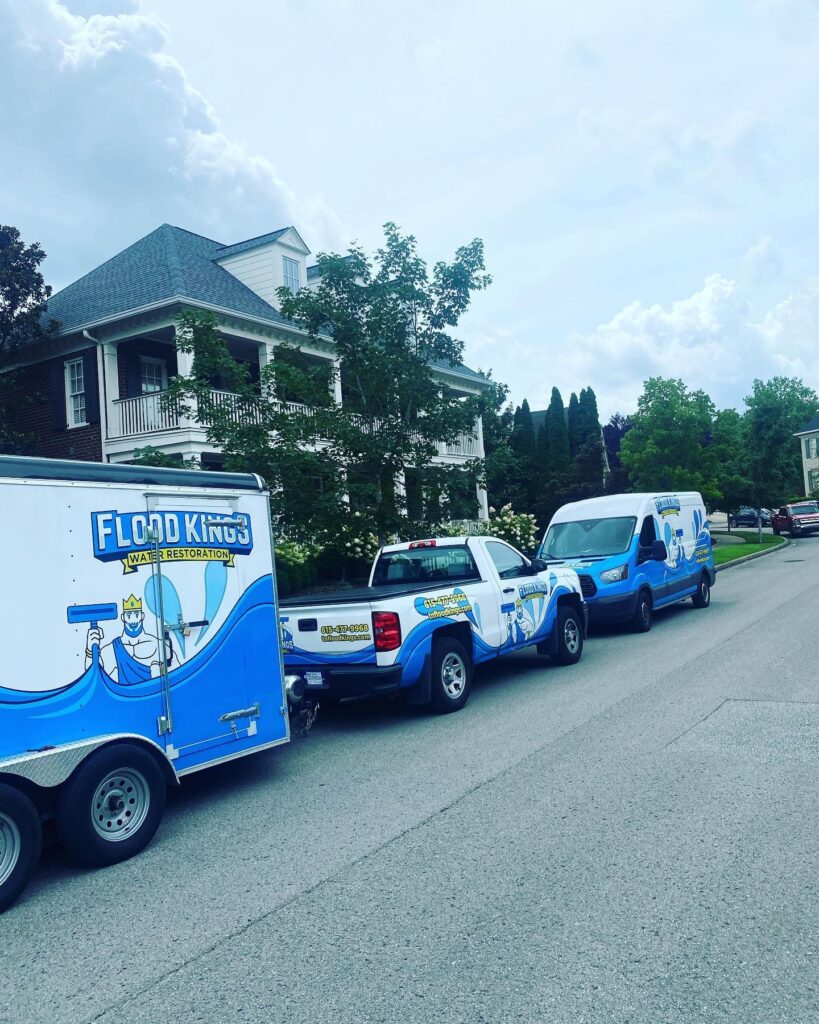
Mold Removal vs. Water Damage Removal Process
When you call TN Flood Kings for water damage remediation, we will determine if you need mold remediation and provide full service. The processes involved are intertwined, but there are some steps that are only about removing mold.
Mold Removal
Our goal is to eliminate mold colonies and prevent mold growth. It’s essential that we destroy every colony because even a small amount of fungal material left will begin to proliferate again, once again affecting your indoor air quality and posing a health hazard.
First, we perform mold testing in all areas of your home. The Centers for Disease Control notes that it’s not necessary to know exactly what type of mold you’re dealing with, so we’re just looking for any evidence of mold.
Once we’ve identified areas of your home that need mold remediation, we begin the process by removing any excess humidity. Mold thrives in high-humidity areas, so we want to dry everything out so that it has no nutrient sources.
To remove mold, we use a specialized bleach-based mold cleaner on every possible surface. Some things that are highly infested may need to be thrown away because they can’t be treated.
After that, we’ll test again and do another round of sanitation before we’ve determined that all the mold spores are gone and you won’t have another infestation.
Water Damage Removal
Water damage remediation, like mold remediation, involves drying out the affected area and removing any materials that cannot be salvaged. We will extract all water, using dehumidifiers and air movers to lower the indoor humidity.
When everything is dry, we sanitize all surfaces, remove damaged materials, and repair damage by replacing discarded building materials and performing general contracting, like placing and placing drywall.
For both of these services, TN Flood Kings will work with your insurance company to ensure you get as much coverage as possible.
How to Prevent Mold Damage
Preventing mold damage is all about preventing mold from growing in the first place. You need to keep humidity low, particularly in areas of the home that have numerous water sources like bathrooms, kitchens, and laundry rooms.
Run dehumidifiers in areas like kitchens, bathrooms, laundry rooms, and basements, and be sure to clean them regularly: full dehumidifier pans also encourage mold to grow.
If you live in an older home without exhaust fans in the bathrooms, have them installed wherever possible.
Another element of preventing mold damage is boosting your indoor air quality by using air purifiers with High-Efficiency Particulate Air (HEPA) filters.
These high-quality filters are made of plastic fibers, fiberglass, or borosilicate glass fibers that are closely bound together to trap incredibly small materials floating in the air, like mold, dust, pollen, and bacteria. A true HEPA filter is capable of filtering out 99.97% of mold!
Clean hard surfaces regularly with disinfectant. Use a bleach-based mold cleaner on safe surfaces, being sure to protect your airways while doing so. Extended use of bleach can be hazardous, so be very cautious.
On other surfaces, Windex is an excellent choice: it has ammonia, which kills most types of mold. The same concerns regarding bleach apply to ammonia, too.
Never mix cleaning solutions, especially those that contain bleach and ammonia, as this can cause incredibly dangerous chemical reactions. Pick one type of cleaner for one surface and don’t use anything else.
Steps for Preventing Water Stains from Molding
To prevent mold on a water stain, follow these steps.
Find: Identify the source of the leak and stop it as soon as possible.
Dry: Blot up any excess water, then begin running fans. If it’s a large water stain, you can rent an air mover and run it for several days.
Clean: Clean the spot thoroughly with a disinfectant, then let dry.
Spray: Apply a mold removal spray or gel on the surface. Follow the manufacturer’s instructions for how long to let it sit before wiping it away.
Monitor: Check on the spot regularly.
Once you’ve followed these steps, monitor it closely for any signs of mold. The sooner you start to remove mold, the better. If the water stain has been sitting for more than a day or two, you should consider calling a mold remediation team like TN Flood Kings, even if you don’t see any obvious mold.
Does Homeowners’ Insurance Cover Mold Removal?
This depends on whether the mold damage is associated with what’s called a “covered peril,” in other words, water damage that’s already covered.
As an example, let’s say that you had a pipe freeze and burst while you were on vacation, and it caused extensive damage throughout your home. You weren’t able to get back home immediately, and now there’s mold floating throughout your home. Because a burst pipe is covered by your insurance, the associated mold removal will also be covered.
You may also have supplemental insurance options that will help cover mold remediation, typically water backup coverage and hidden water damage covered.
Water backup will cover damage associated with drain backups, sump pump failures, or sewer line clogs, while hidden water damage coverage will help with leaks inside your walls, such as a slow drip from a pipe.
Unless you have specific flood insurance, such as that offered by the National Flood Insurance Program (NFIP), it’s unlikely that you can get help with water damage and mold damage caused by a flood.
Check Your Insurance Policy
It’s important that you be familiar with your insurance policy in order to know what will and will not be covered in the event of water damage. As you read your policy, look specifically for information about mold remediation and the types of water events covered.
TN Flood Kings will work with your insurance company and ensure that if you can make a claim for mold damage remediation, you receive the full compensation.
What Does the Average Mold Removal Cost?
The national average for mold removal is about $2,200, but it can cost up to $3,300, depending on the extent of the infestation. Water damage is more variable, costing anywhere from $500 for a small area to $12,500 or more for extensive remediation.
The Flood Kings want to provide you with the greatest peace of mind at the lowest cost, eliminating all indoor mold and making your home safe again. During our free consultation, we’ll give you an idea of what you can expect with regard to costs, insurance coverage, and timeline.
Need Mold Remediation in Middle Tennessee? The Flood Kings Are Here to Help!
